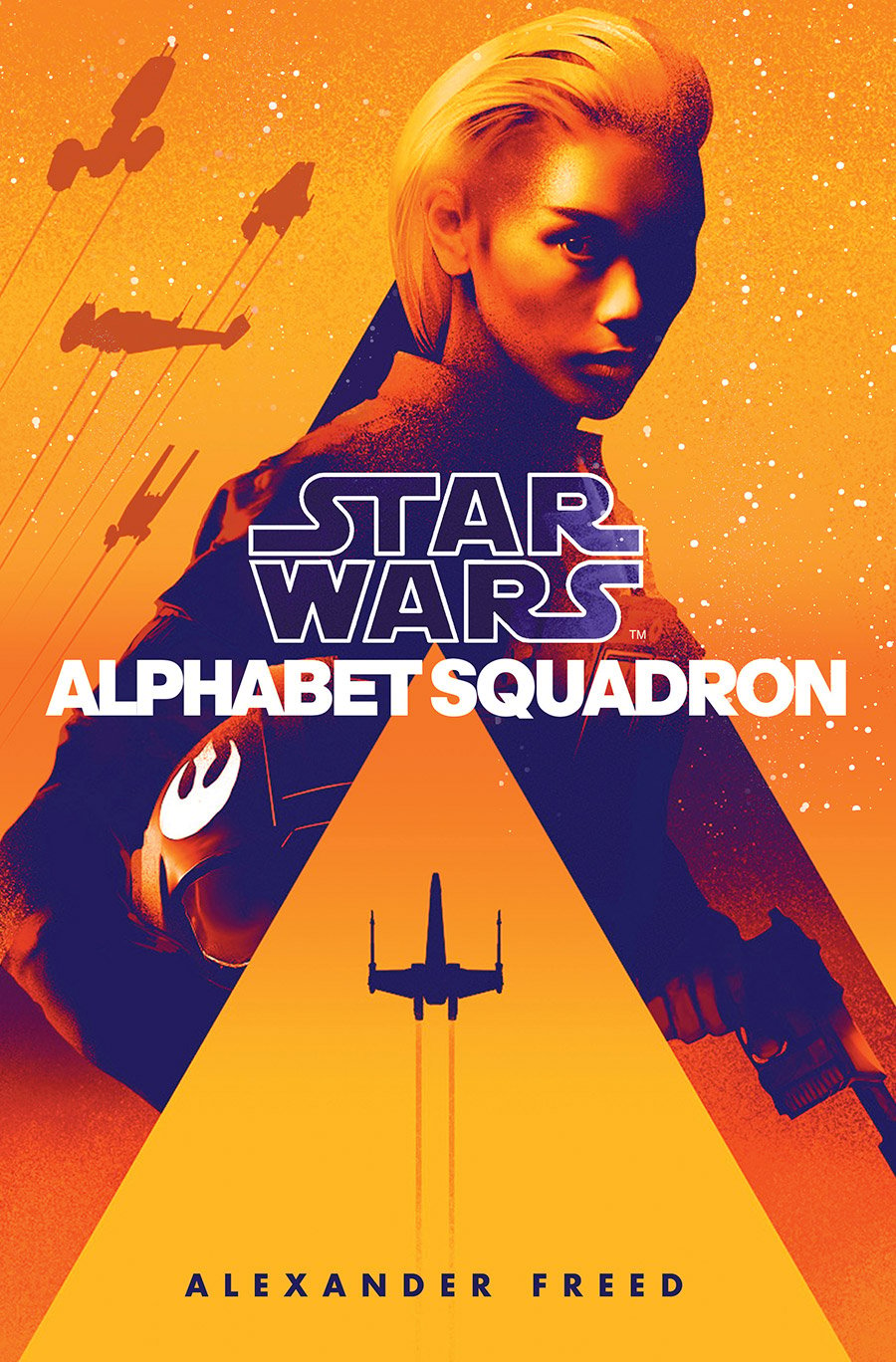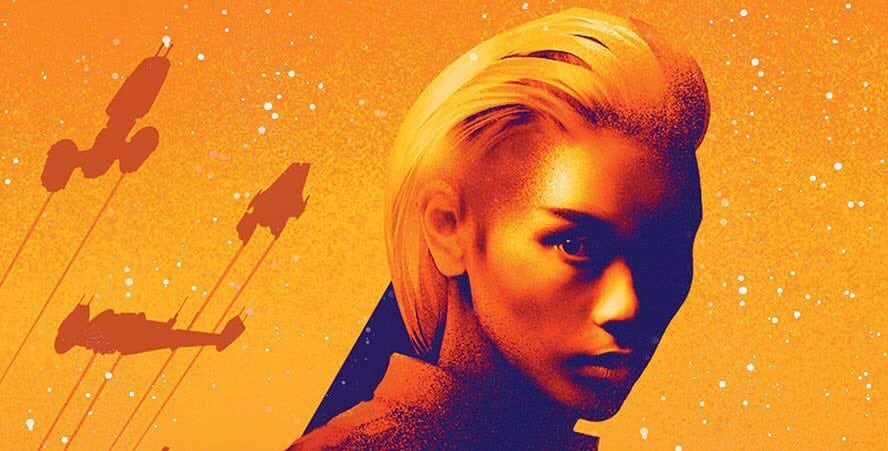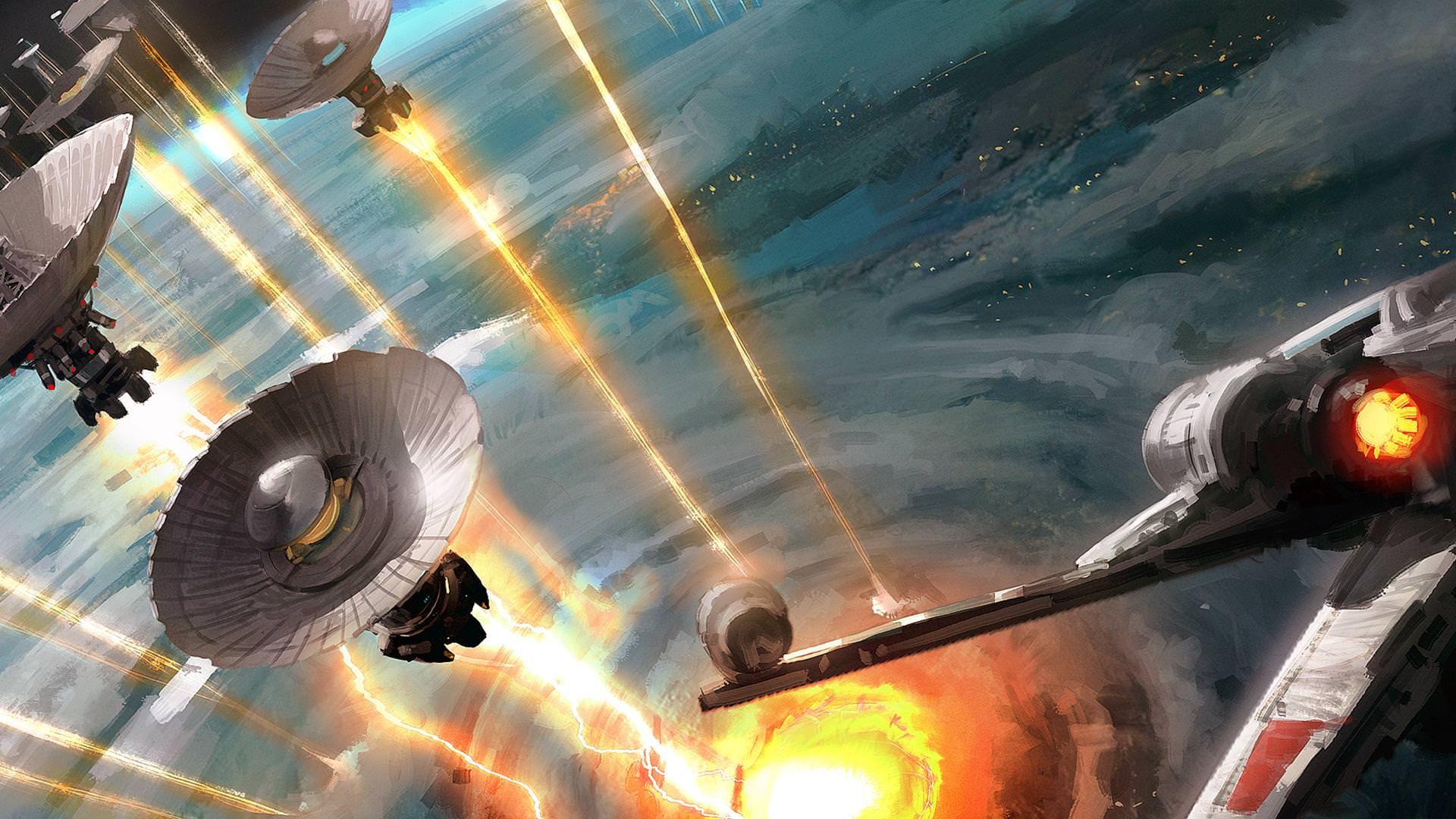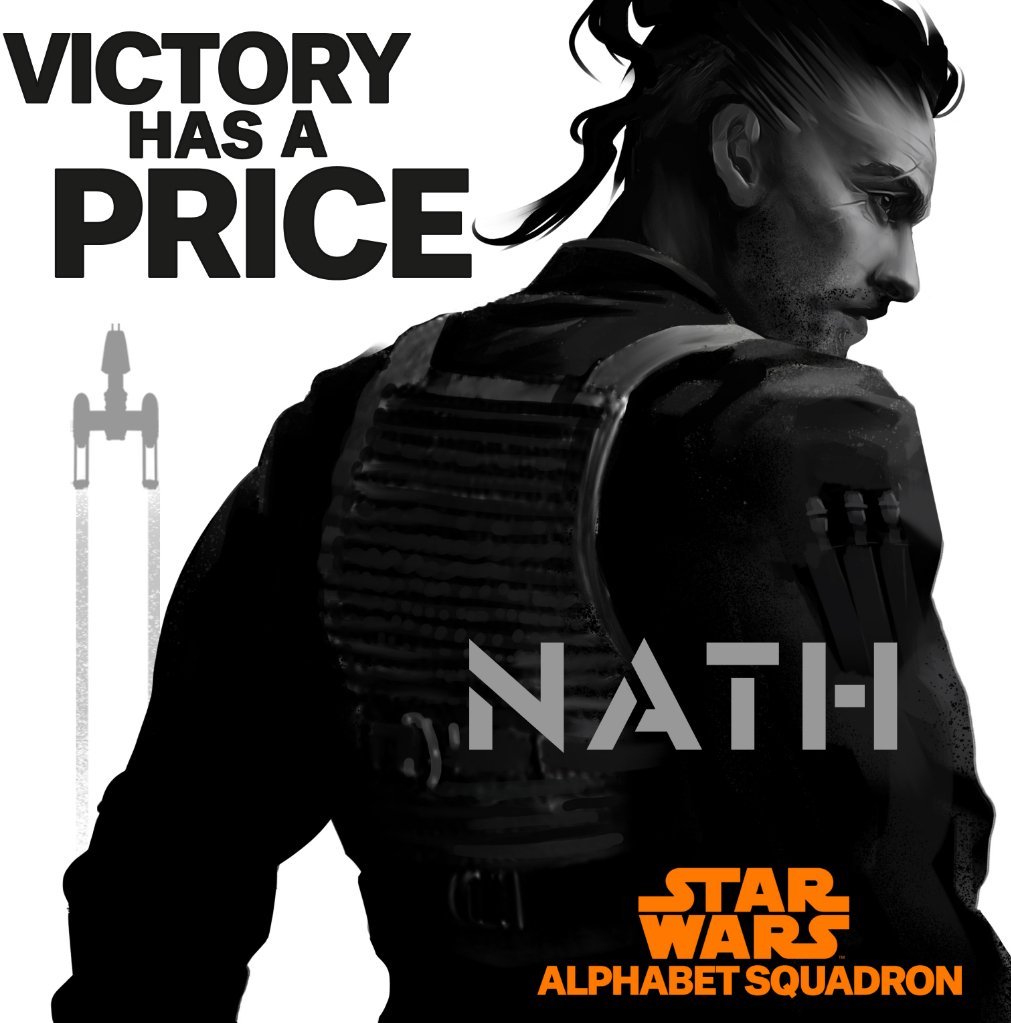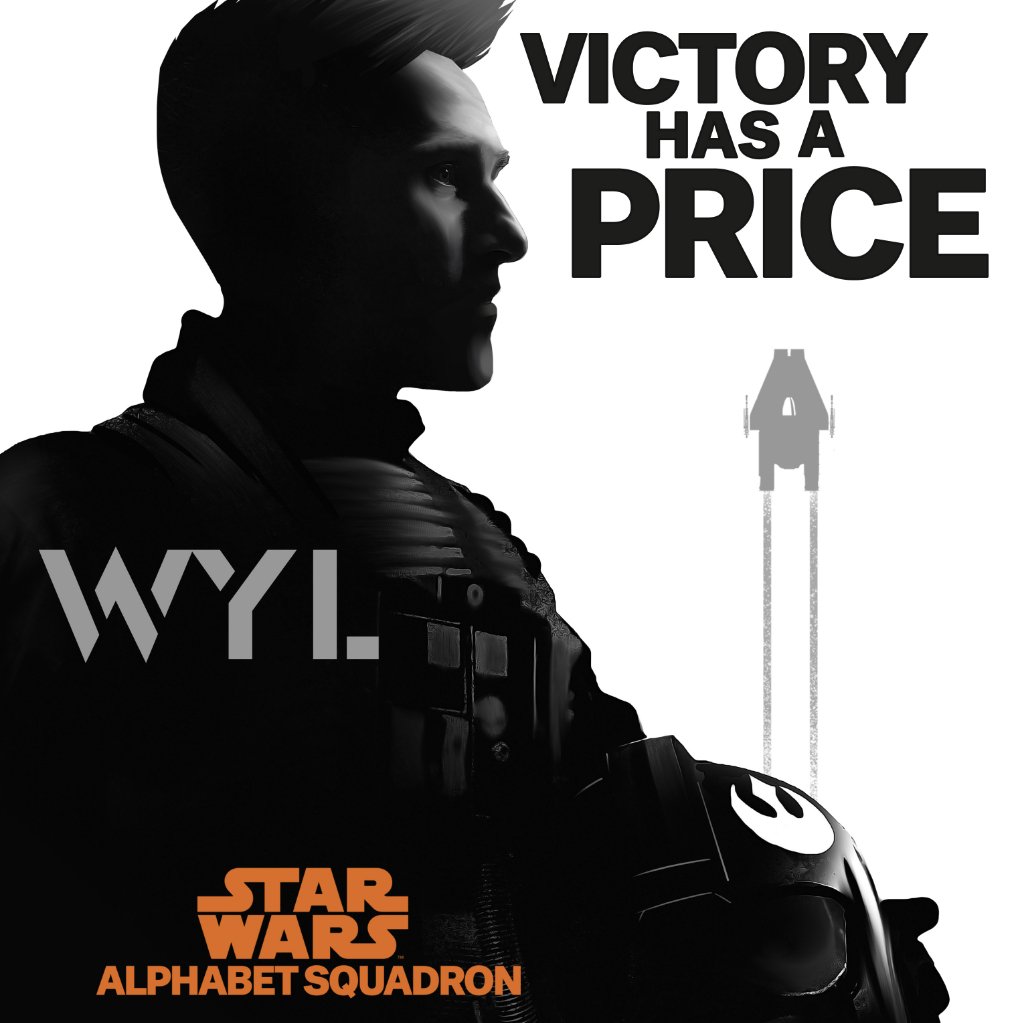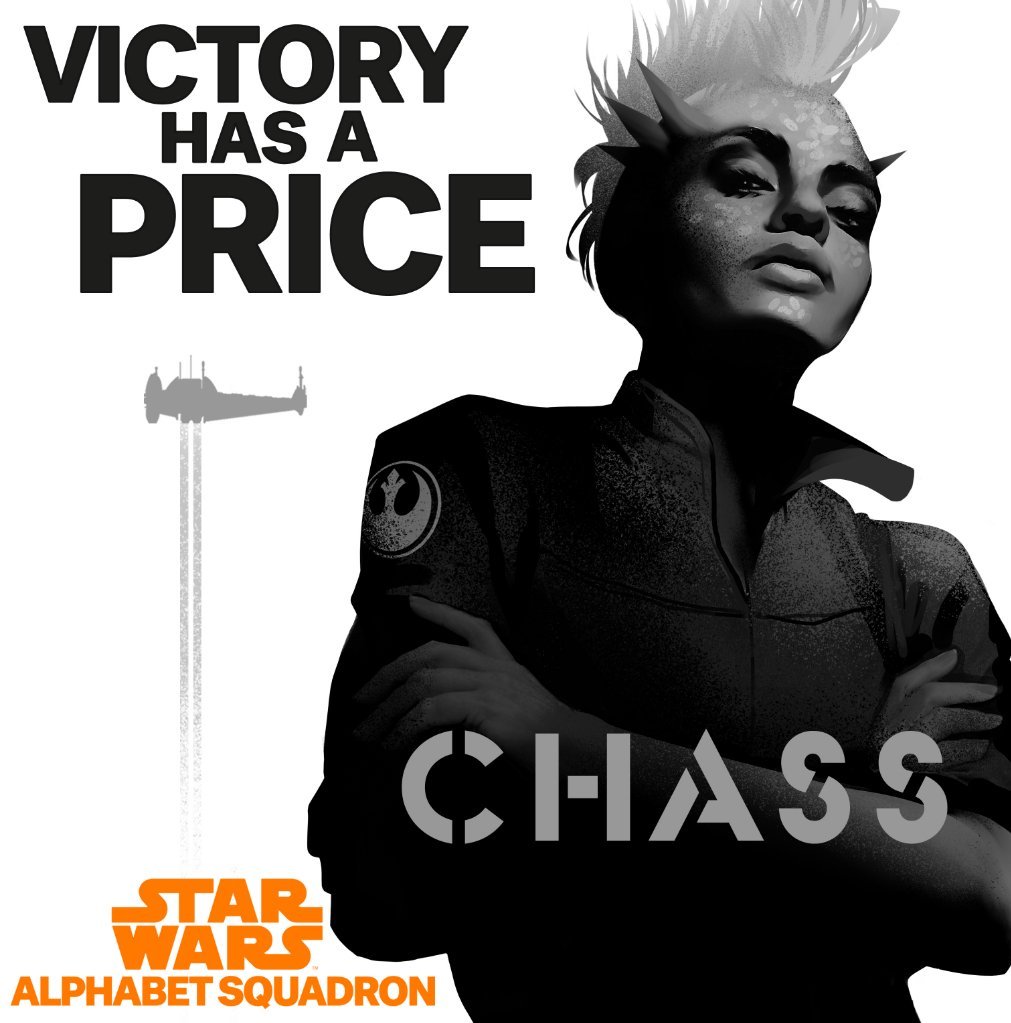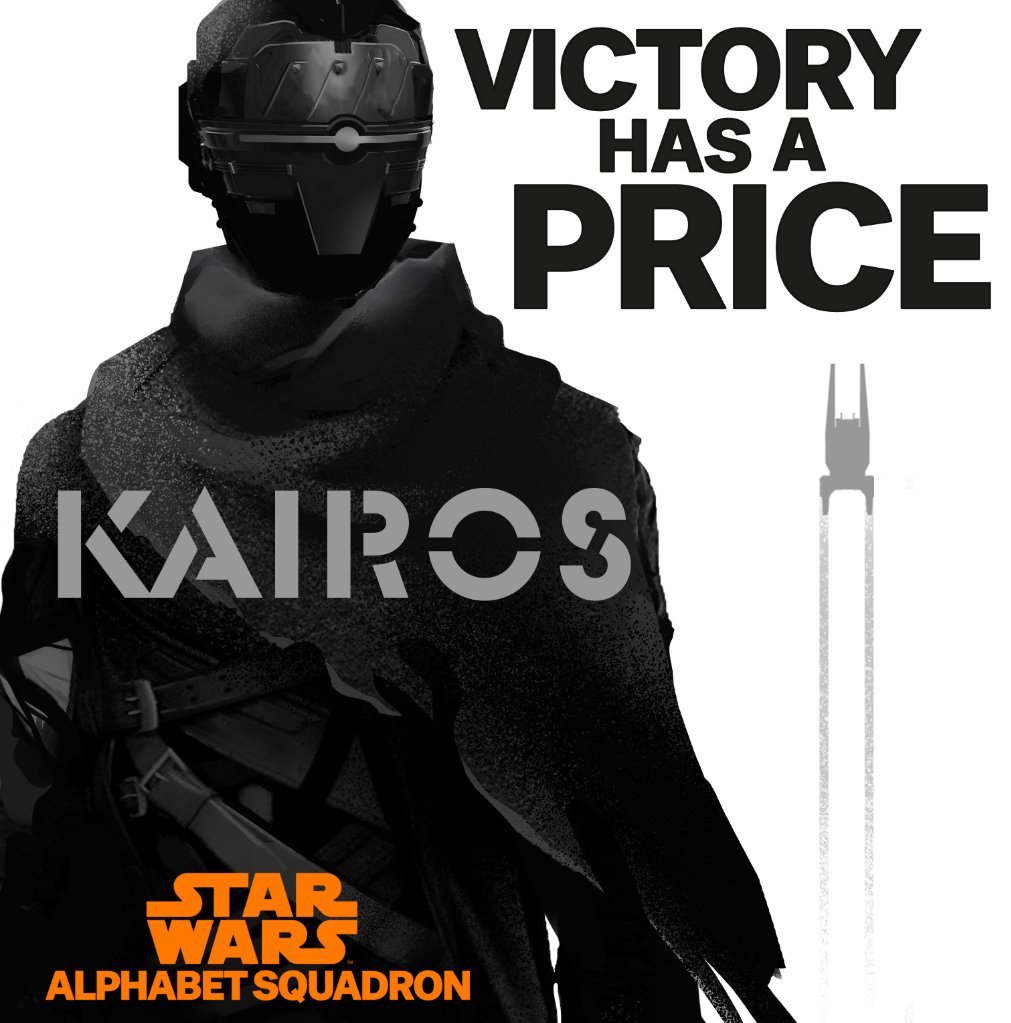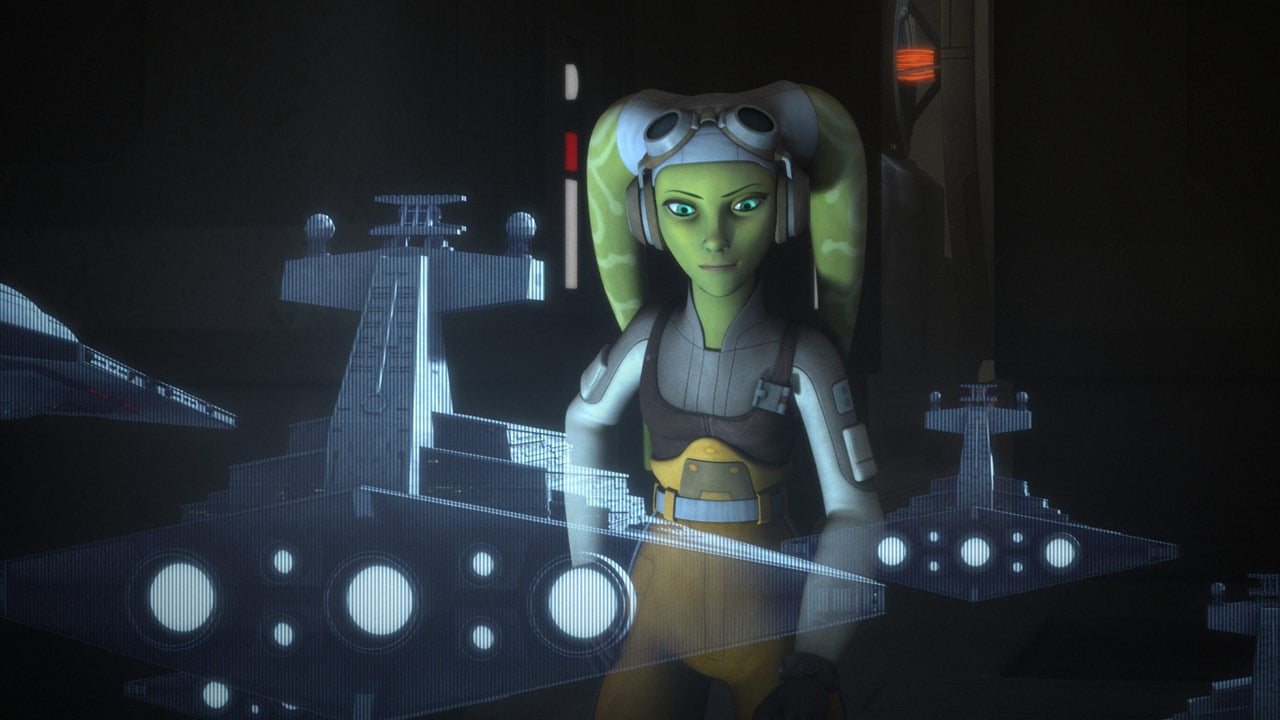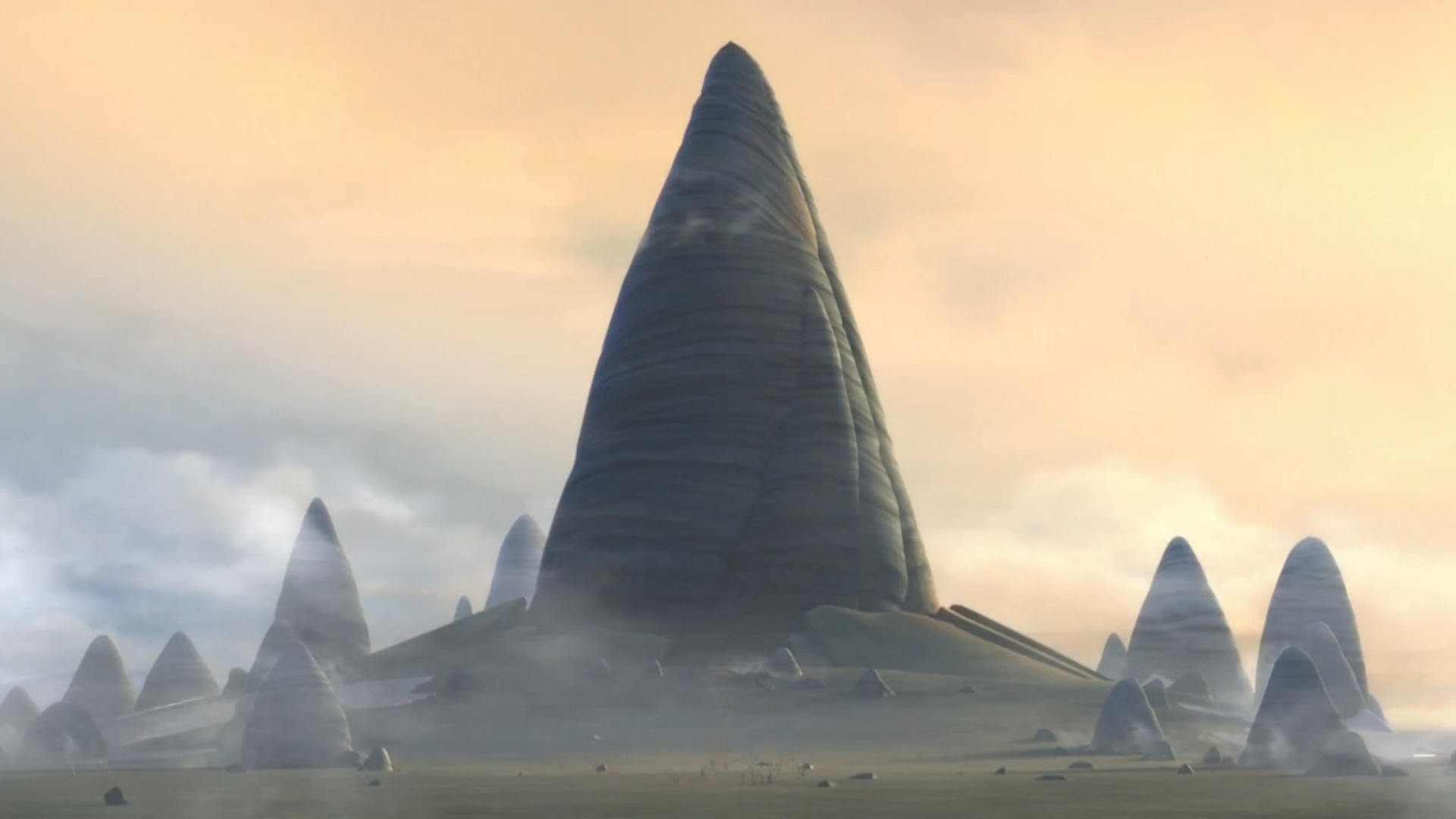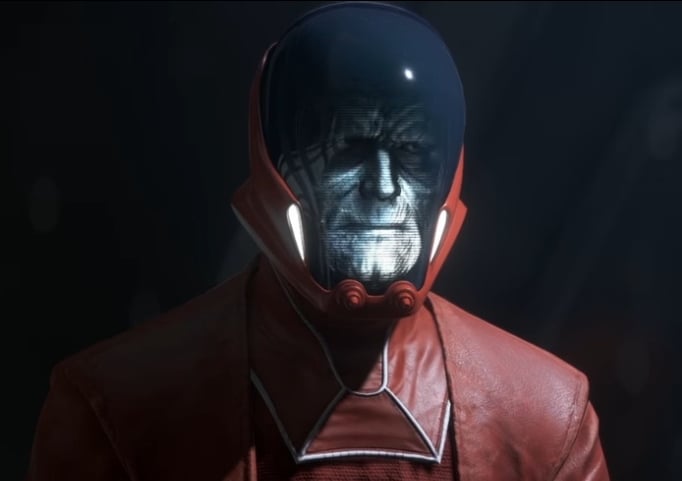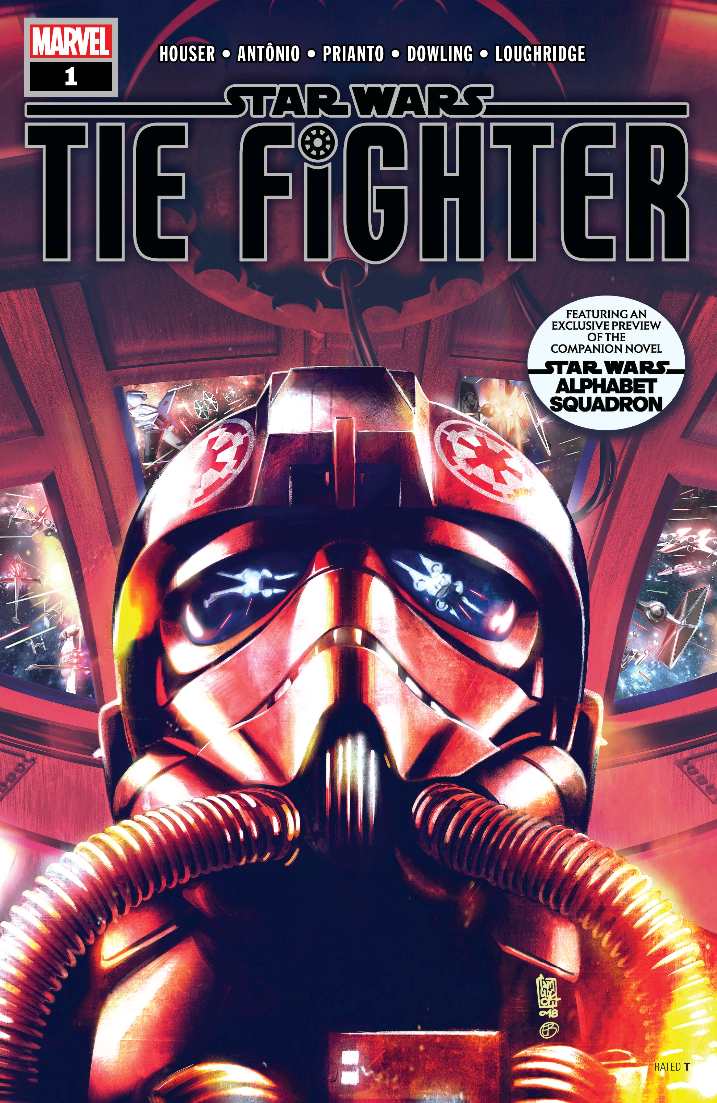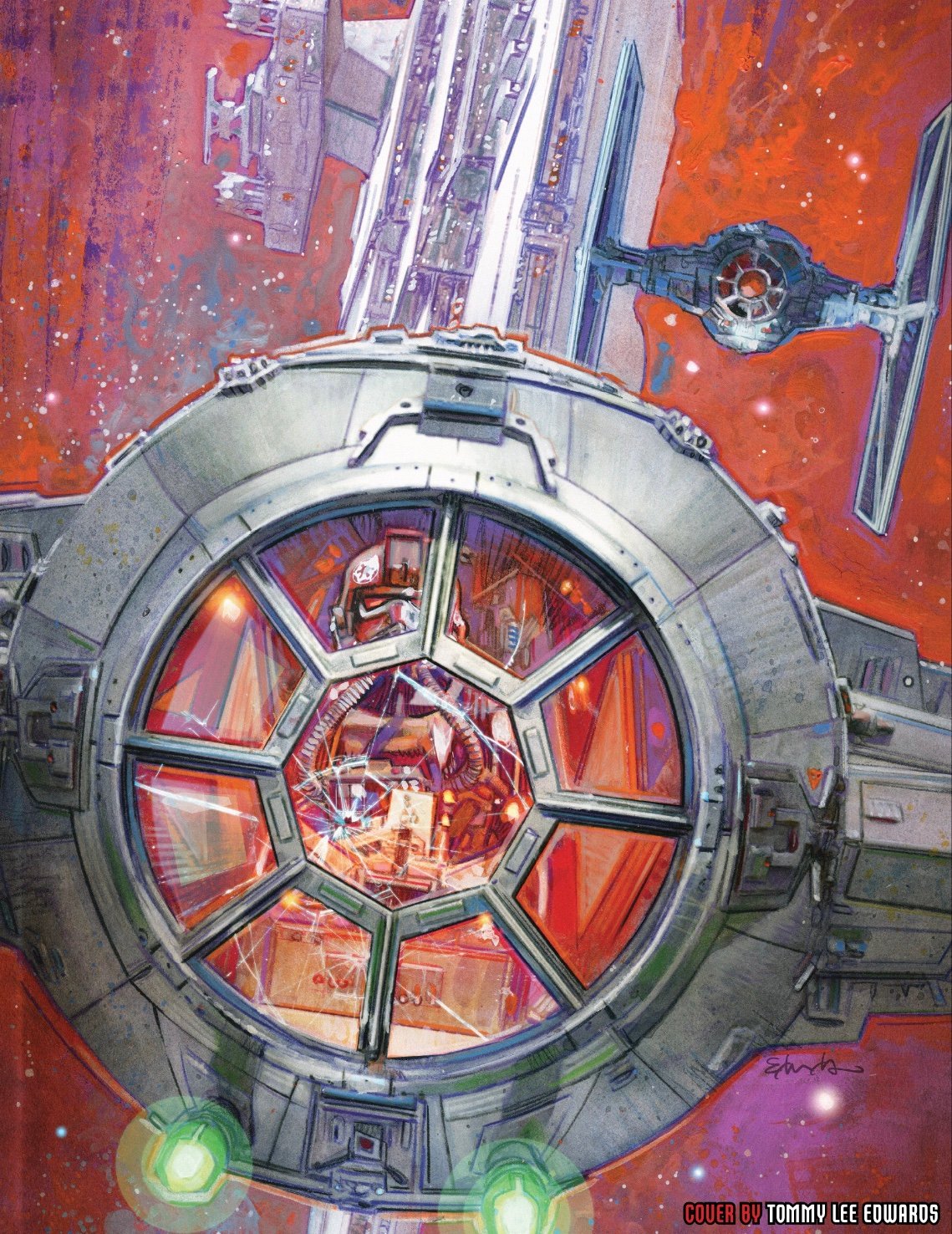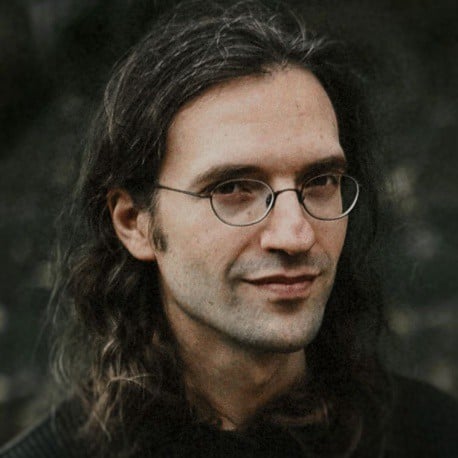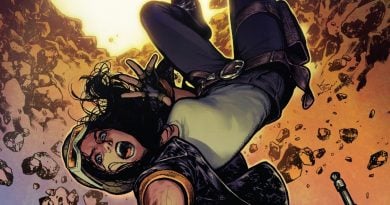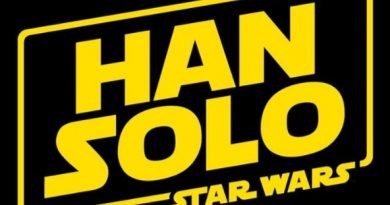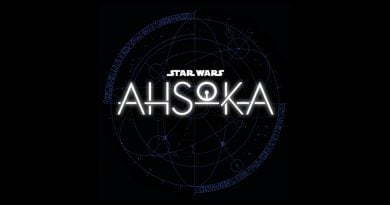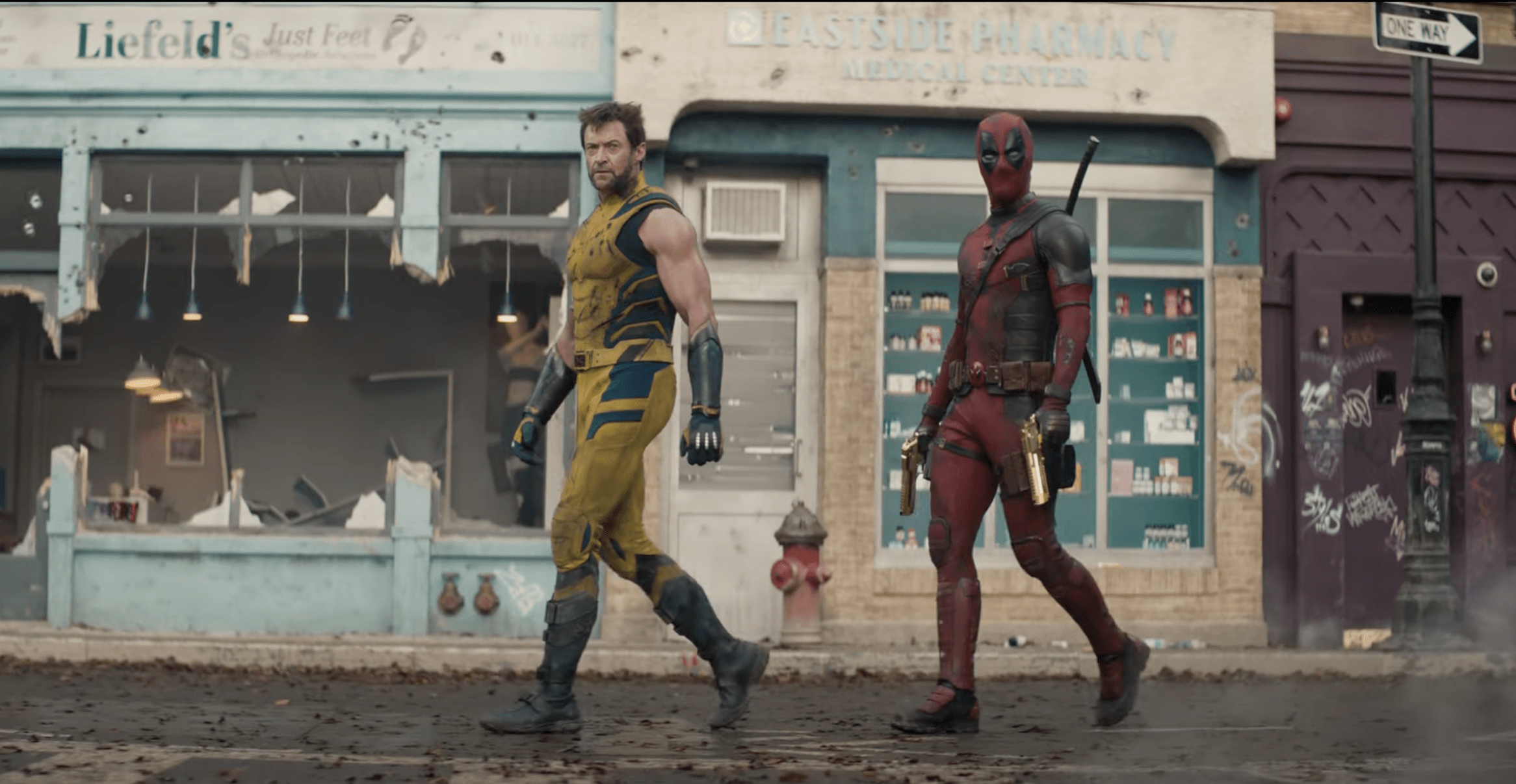SPOILER REVIEW – Alexander Freed’s Alphabet Squadron Paves The Way For A New Era In The Star Wars Universe
The Empire is not going away quietly in Alexander Freed’s Alphabet Squadron and the galaxy is a very dangerous place. I hope that’s not stating the obvious, because I feel that’s one thing you should know when picking up this novel – which tells a story set in a relatively untouched era of the Star Wars timeline. This is the story of Alphabet Squadron, composed of five pilots who’ve come aboard with their own stories and trauma of a war which continues to claim casualties and spread darkness amongst a galaxy in flux. The Battle of Endor was a watershed moment in the struggle and defeat of the Empire, but the goal posts of the frontlines were only moved that day, and the plurality of battlefields expanded. The fight became much uglier while the lines between heroes and villains skewed even further. Those blurry distinctions, coupled with a harrowing story of ending the conflicts to provide a foundation for the New Republic, line the pages of this wonderful novel. SPOILERS AHEAD….
Though Alexander Freed does fantastic job of providing insight into the complicated stories of each pilot composing Alphabet Squadron, Yrica Quell is the focal point of this story. Fans were struck by this cover when we got a glimpse of what awaited us months ago, and I’m happy to report the ominous, shadowy gaze conveys the uncertainty Quell feels throughout the story. We are introduced to her in the midst of her long-game plan to join the Rebel Alliance. Though Quell is not running from a brutalized planet or oppressed people to take up arms against the oppressive regime; Quell is an elite pilot in one of the deadliest TIE Fighter squadrons in the Empire – Shadow Wing. She joined the Empire in hopes of getting proper training to become a pilot with the idea she’d take those abilities to the Alliance. We meet her while she’s in the midst of crossing a redline that drove many Imperial officers to defect from the Empire – Operation Cinder.
Alphabet Squadron is intended to be part of a crossover event with Marvel, complimenting the Shadow Wing focused TIE Fighter comic. I’ll talk more about that towards the end of this review, but I’d recommend having another comic series under your belt before you start reading. The prerequisite reading for Alphabet Squadron, at a baseline, is Greg Rucka’s Shattered Empire limited Marvel series (Our reviews of issues one, two, three, and four). Maybe not required, but it will give you a very detailed look at Operation Cinder (it’s also depicted in the game Battlefront II). For those who haven’t read, this was part of a contingency plan by Emperor Palpatine’s design in the event of the Empire’s defeat. Across the galaxy, portions of the Imperial Fleet decimate resource-rich or strategically important planets using a combination of climate altering satellites and awful bombardment. No one knows for sure if this plan was developed out of spite or if it’s to cripple the galaxy to make way for an Immortal Emperor to one day return and reclaim his rule among the officers strong enough to have endured defeat (cough cough…The Rise of Skywalker…cough cough). This kind of wanton barbarism was a bridge too far for many Imperials who already struggled with their government building weapons capable of wiping out billions in an instant. Quell doesn’t hesitate leaving the Empire as soon as she sees Operation Cinder firsthand, though we aren’t really sure if she would’ve if this nightmare hadn’t been unleashed. Whether the destruction she witness via Operation Cinder on the planet Narconis was a catalyst or final straw is something the reader learns throughout the story.
The vivid descriptions of Operation Cinder open Alphabet Squadron, as Quell recounts them to a reprogrammed Imperial torture droid, Ito (a play on the designation IT-O). Since Quell’s last flight in Shadow Wing, she’s ended up in something of a shantytown colony for Imperial defectors called Traitor’s Remorse. The New Republic not only has its hands full dealing with the last holdouts of the Empire but it’s trying to figure out what to do with those who’ve surrendered. Traitor’s Remorse is on the edge of lawlessness, with the possibility of a bombing by an Imperial loyalist posing as a defector or a few death sticks making their way through the village. Quell is trying to keep her head down and attends sessions with Ito. The droid conducts the sessions as if their purpose exists somewhere between therapist and interrogator. The irony of an Imperial torture droid functioning as a therapist is not lost on any character who encounters Ito. The droid plays a large roll in Quell’s eventual integration to the New Republic.
One thing to note going into Alphabet Squadron, there’s a lot of exposition. It’s a very dense book. No complaint from me but don’t be surprised if you find yourself flipping back-and-forth between pages to ensure you didn’t miss a character introduction or interaction. It’s hard to explain that while Alphabet Squadron moves very fast in terms of the events it depicts, the slower moments of the book are filled with names, technical terms, and designations. To Star Wars fans who want to speed read this: don’t. Enjoy Freed’s meticulous writing and don’t be afraid to flip back a few pages to make sure you caught something. The trajectory of this story keeps it moving forward and there’s very little backtracking to the established relationships and interactions formed throughout the narrative. That being said, this novel can be a Wikipedia page if you want it to, but don’t forget it’s a story.
Quell’s new therapist answers to a New Republic officer named Caern Adan. Adan has some serious Draven (Rogue One general who tasked Cassian Andor with assassinating Galen Erso) vibes. Adan served the Rebel Alliance in intelligence and has transitioned to whatever the New Republic form of it will be. Considering his service to the Rebellion during one of the darkest times in the galaxy, it’s no doubt Adan has seen his fair share of atrocities committed by the Empire. He has little sympathy for defectors and makes no effort to hide his disdain for Quell. His interest in her is solely related to her time flying with Shadow Wing. The elite, Imperial squadron has been raising hell since the execution of Operation Cinder. The hyperlane infrastructure of the galaxy is in chaos and Shadow Wing have been raising hell to continue its disruption. Adan thinks Quell might have some insight into how to best deal with Shadow Wing, since she’s familiar with their commanding officer and was once a part of the 204th Imperial Fighter Wing. Adan is also not without his uncertainties. He’s realizing the way the Rebel Alliance functioned in its struggles against the Empire would have to adapt if as it established the New Republic. Stability is the new goal for those who won the victory over the Empire and through their eyes it appears equally as daunting to achieve. The dynamic between Quell and Adan certainly conjures Jyn and Draven’s implied mistrust coupled with the necessity of needing to find an equilibrium of their convoluted perceptions. Throughout Alphabet Squadron Adan seems to regard Quell as disposable and wouldn’t mind if she spent the rest of her life in the purgatory of Traitor’s Remorse. Their first mission together is to establish a task force of their own to deal with Shadow Wing.
A strength of Alphabet Squadron is Freed’s unapologetic approach to giving each member of the squadron their own story before bringing them together. There’s nothing neat and nice about the way Alphabet Squadron as a force in the New Republic is ultimately realized. Quell has her own issues of adapting to a form of command that’s not an Imperial handbook while also trying to earn the trust of four pilots from very diverse walks of life in a galaxy far, far away. They all have a shared trauma of fighting viciously in a war without rules or conventions. A very interesting quality the pilots do share is knowing the galaxy needs to heal, and as military officers, they must do better. There’s a great deal of unlearning both rigid Imperial ways and the unorthodox tactics the Rebel Alliance was forced to use.
The first member Quell and Adan recruit is Nath Tensent. Nath shares the Imperial background with Quell and he also used the skills and resources given to him by the mighty force to his own devices. He used them to participate in criminal activities, known to span eight different systems in the Outer Rim. Basically, the corrupt Imperial official people like Jabba or Han probably bribed to get where they needed to go. Nath joined the Rebellion before the destruction of the first Death Star, so he’s had a few years to adjust where Quell is still trying to figure out how she fits in this new command structure. The dynamic between Nath and Quell is not at all smooth. Nath is just coming back to the New Republic after losing all his officers to Shadow Wing. He wants revenge against Shadow Wing and is prepared to take it however he can, even against Quell, it if comes down to it. The casualties taken by Shadow Wing have affected Adan and he makes no bones about his desire for vengeance when expressing his inherent mistrust of Quell. Though Quell wasn’t one of the pilots responsible for his squad’s deaths, she takes the brunt of the blame for Shadow Wing’s sins. Quell frequently has to answer for Shadow Wing and the Empire. Tensent is reluctant to join at first but agrees to, bringing his Y-wing along with him. Nath Tensent definitely strikes me as an old soul of the group, similar to an older sibling or Han Solo without the charm. He’s seen a lot and brings that experience to Alphabet Squadron.
Wyl Lark brings a sense of youth and uncertainty to the group. The latter part of his personality struck me as a much needed dynamic in a group where everyone ends up being very hellbent on what they think is the right thing to do. Wyl is an officer and follows orders. Once a member of Riot Squadron, whom we meet during his first appearance in the book as they come under attack by the Empire. Wyl wants to be done fighting. He’s a veteran of the Battle of Endor and has been doing reconnaissance across the galaxy since the destruction of the second Death Star. Considering the implied farm boy naivety, Wyl has seen the most of them. He’s seen friends and comrades killed, while flying in impossible circumstances. This psychological onslaught hasn’t deterred his courage and he’s ready to risk his own life to save his fellow pilots. What complicates Wyl’s story the most and brings him into Alphabet Squadron is his survival of a deadly attack by Shadow Wing on the ship he served aboard, Hellion Dare. Wyl Lark feels tremendous guilt for having survived as well, but he’s not the only survivor of Hellion Dare. Wyl flies an A-wing.
Chass na Chadic is my personal favorite member of Alphabet Squadron. Also a survivor of Riot Squadron, her life was saved by Wyl when she was bound and determined to die fighting. Simply put, she’s a badass. She’s flown with the Partisan affiliated Cavern Angels on Jedha, Jyn Erso is her hero (whom she actually met, at one point), and she listens to various forms of loud music from around the galaxy while in the midst of combat. She’s a shoe-in for Alphabet Squadron, especially at the prospect of them squaring off against Shadow Wing. She’s an incredibly gifted pilot who flies a B-wing, something Hera Syndulla herself mentions is crazy, as we learn they’re notoriously difficult to fly but are tactically great in a battle.
This is Kairos. You’ll see a lot of her but by the end of Alphabet Squadron you will know very little. We don’t learn her species, only hear her speak once, and don’t really learn much what her motivations are in joining the New Republic. One thing is clear, Adan and other New Republic leaders trust her completely and she very much plays a loyal and reliable support role similar to Chewbacca. She also has great strength and demonstrates it against several bucket heads when the opportunity presents itself. You’ll always be glad to see Kairos swoop down in her U-wing, ready to lend support to the rest of Alphabet Squadron. She’s worked closely with Adan, but he has faith in her, and by the end of this story the mystique of Kairos becomes kind of charming.
Though she’s not a member of Alphabet Squadron, General Hera Syndulla is a huge presence in the second-half of the book once this squad starts to come together. We learn General Syndulla has been leading New Republic forces across the galaxy, trying to free up hyperlanes and clean-up the messes Imperial commanders are making with the scraps of ships they have left. She commands a fleet from her ship, the Lodestar, and has been successful in her attempts, but Shadow Wing has been a specter in her sight. Shadow Wing has taken control of the Pandem Nai system, which is a crucial intersection of hyperspace lanes, and the planet which shares the system’s namesake is rich in tibanna gas. Hera and the New Republic are worried that once Shadow Wing burrows in, it will take them years to get rid of them. Though Hera is a huge presence and guiding force for many of the uncertain pilots in Alphabet Squadron, we don’t get much more than surface interactions from her. There is a quiet moment where she laments about missing her family and the days aboard the Ghost. There’s no mention of Jacen Syndulla, which was both surprising to me and made sense at the same time, since I think we won’t be meeting him until he’s a little bit older. I’d hoped for some mention, but it’s just Hera and she’s as focused as we’ve come to expect from her. No time going over greatest hits, though she does mention their infamous B-wing prototype heist and familiarity with Jedi temples.
Speaking of Jedi, they do come up and it’s no surprise they’d become a myth by the time of The Force Awakens. The pilots speak of conflicting historical accounts of the Jedi. Their order was small. They barely had any involvement in the Clone Wars. Palpatine succeeded in eradicating almost all of their members and was arguably as successful in distorting their legacy. The Jedi erasure is another possibility of why Sheev was so obsessed with consolidating Force artifacts. None of them seem to be aware Luke Skywalker is a practitioner of the lost order, though they mention it’s rumored. Wyl claims to have met Luke at Endor.
Once this group of pilots find themselves aboard the Lodestar, the story really gets going. Because of Quell’s experience with Shadow Wing, she’s tasked to be their leader, but Hera doesn’t think they’re ready – and more importantly, she doesn’t think Quell is ready to be their leader. They are forced to spend hours in flight simulators, which recreate famous battles you’ve probably heard of, before being dispatched on their first mission to Abednedo, a planet decimated by Operation Cinder. The mission is to locate a group of Imperials hiding out on the planet, but they’re ambushed and the plan nearly falls apart. Quell and the rest of her pilots manage to extract and officer and dispense with the bucket heads, but they haven’t proven themselves to Hera.
At this point in the story, Quell is ready to deal with Shadow Wing. The association she has with them continues to follow her wherever she goes and she wants to do her duty, to whatever end it might be. She’s also got her secrets, and as Hera continues to give the ragtag Alphabet Squadron missions, Adan starts learns what one of them may be. This is a spoiler review, but I’m not going to ruin the ending of this book.
One notable mission, a supply run, leads them to a Jedi temple. Chass and Wyl get a taste for the magic of the Force when the interior of the Jedi temple puts on a star show for them. Freed’s writing in this scene is wonderful and shows his range between technical terms and ethereal descriptors. Their time in the temple also opens up dialogue between them, and it’s when we really get to learn about their past, Kairos included. I think her simple, voiceless description of how she came to fight against the Empire is one of my favorite moments in the book, and there’s no way I’m spoiling it here.
Back aboard the Lodestar, it’s time for Alphabet Squadron to prepare for their inevitable encounter with Shadow Wing. My biggest complaint about Alphabet Squadron is the lack of Shadow Wing’s actual presence. When we do get a glimpse into their world, it’s only through the eyes of their commander, Colonel Shakara Nuress, or “Grandmother”.
Don’t get me wrong, Shakara Nuress is a very interesting character – she also hates the nickname “Grandmother”. Don’t let the nickname fool you, though. Nuress is the equivalent of the most loyal, deadly officers we’ve met in the Empire. She’s helped carry out Operation Cinder and is determined to restore the Empire, though she is a realist and knows whatever comes after will be a new iteration of the totalitarian behemoth. Nuress often refers to the rebels as ‘separatists’ and disregards any corrections offered, since she’s a veteran of the Clone Wars. I thought that personality tick to be a very interesting one, making me wonder how many Imperial officers came from Republic officers who simply discovered they had a talent for combat during the Clone Wars. Nuress isn’t afraid of any conflict, even when Hera’s fleet and Alphabet Squadron finally corner the Imperial remnants she commands.
A unique aspect of Alphabet Squadron and one I’m not terribly thrilled about – this story has a villain problem. Simply put, there’s no real villain. Nuress is about as close to it but the stoic demeanor of an Imperial loyalist who does things by the book still dominates her personality. Overshadowing everything underway in Nuress’ Star Destroyer, the Pursuer, is a somewhat dormant Sentinel. For the uninitiated, Palpatine deployed these Sentinels after his death. They are droids programmed to carry out his Contingency and direct Imperial officers how to carry out each act of retribution against the galaxy. We don’t hear anything from this Sentinel throughout the novel, even as Nuress is clinging to her last breath (that’s not as much of a spoiler as you think, it’s more the manner in which she’s killed) pleading with the digital ghost of Palpatine to say she fulfilled her duty. I understand the reasoning behind the lack of antagonist, as Alphabet Squadron functions as one-half of the crossover event between Marvel and Del Rey, but I still thought it hindered the drama.
Marvel’s TIE Fighter is still ongoing, with only two issues released (Our reviews of issue #1 and issue #2). Though I applaud the ambition of this crossover, a clear villain and more scenes directly involving Shadow Wing really would’ve helped the sometimes glacial pace of Alphabet Squadron. We hear plenty about what Shadow Wing has done in the galaxy, so we know they are bad, but I would’ve loved to meet the pilots in the novel. If you’re wondering, the comic series by Jody Houser is very good, and I recommend you read the current and future issues. At this point, the only characters to appear in both TIE Fighter and Alphabet Squadron are Quell and Nuress. I’m sure that will change, but for now, the crossover event seems oddly disconnected, and I can’t help but think having TIE Fighter finish it’s run leading up to the publication of Alphabet Squadron would’ve helped with my villain problems – especially since the comic series takes place before the novel.
The final battle between Alphabet Squadron and Shadow Wing is some of the finest action I’ve read in Star Wars. Freed again demonstrates his versatility and this story’s climax will have you blazing through the pages. Quell and her pilots have a very specific plan they’ve rehearsed and gone over. Not long after the battle starts, that plan is out the window, due to the gaseous environmental conditions of Pandem Nai, the attack on the Imperial stronghold risks destroying the entire planet, with countless civilians caught in the crossfire. Quell demonstrates her quality as a leader by turning her squad’s focus away from destruction and declaring it a rescue mission. It doesn’t go perfectly, but Alphabet Squadron survive and the Empire retreats from Pandem Nai.
Shadow Wing is not defeated, though. What’s left of them escape to fight another day. More importantly though, a huge revelation comes at the end of the book, hinting at who Alphabet Squadron’s next adversary will be. Throughout the book, a character named Devon pops up in some of the more desperate parts of the galaxy. The reader is never given an explanation as to who this person is, but once his true identity is revealed, you have a pretty good idea who the villain in the next Alphabet Squadron novel will be. Devon is revealed to be a character from Quell’s past and someone who could make Alphabet Squadron’s lives very difficult. Make Alphabet Squadron 2 happen!
By the end of the novel, the unit is not perfect, but there is a trust between them and their New Republic commanders. Quell is no longer in the precarious position of Imperial ex-pat they need to keep an eye on. She not only proved her capabilities as a commander, she’s also proven that her regard to protect is just as important as executing the mission. Quell risked everything on Pandem Nai to protect the civilian population, and it didn’t go unnoticed. She’s also reconciled the years of Imperial indoctrination with her duties as a New Republic officer. The biggest obstacle Quell overcomes is how to be a leader in a new way, not just adapt Imperial mantras to suit the New Republic chain-of-command, but lead by getting those under her command to trust her. Hera Syndulla offers a lot of tips, but it’s ultimately Quell who finds her way. What’s remarkable to me about Quell is throughout the story she has everyone hovering over her, trying to guide or watch her, but she surprises herself and them all. I think she’s a very intriguing character and am excited at the prospect of two more books to see how she and her team grow.
Alphabet Squadron is a unique story in how it describes the environment of outer space and how difficult it is to pilot a craft between the vacuum and a planetary atmosphere. The void of space is rarely portrayed as dangerous in Star Wars, but in Alphabet Squadron you can expect nearly any environmental factor to cause trouble. I don’t remember being as on edge about the simple act of taking off or piloting a craft as I was during some of these chapters. Freed does an excellent job of capturing the frenzied psyche of a pilot flying at high speeds, dodging debris or cannon fire. We also learn in depth about the capabilities and vulnerabilities of each type of fighter in Alphabet Squadron, which I appreciated very much. It’s not quite retconning, but you start to understand why a lot of those TIE Fighters went down so easy all these years.
Aside from my complaints about the lack of a villain and a bit of a slow first half, Alphabet Squadron is a great contribution to Star Wars. Every fan who wants a taste of what the future of Star Wars has in store for us should read this novel. Especially that thirty-year gap The Mandalorian and the few scattered works have barely touched. Don’t just read it for that, though. Read it because it does provide a great story with complex characters most people can relate to. Watch their confidence fail, then rise again. Watch them overcome trauma, reconcile their guilt, and showcase that all heroes come from the same pain and vulnerability we experience everyday in real life. These flawed pilots remain flawed, but the collective strength of their team lifting each of them up is a beautiful lesson Alexander Freed has given Star Wars fans.
RATING: 8/10
Alphabet Squadron is currently available at local bookstores and online retailers. Special thank you to Del Rey for the advanced copy used for this review.
Kyle Larson lives in Portland, Oregon. When he's not running trails, he's reading and writing.

